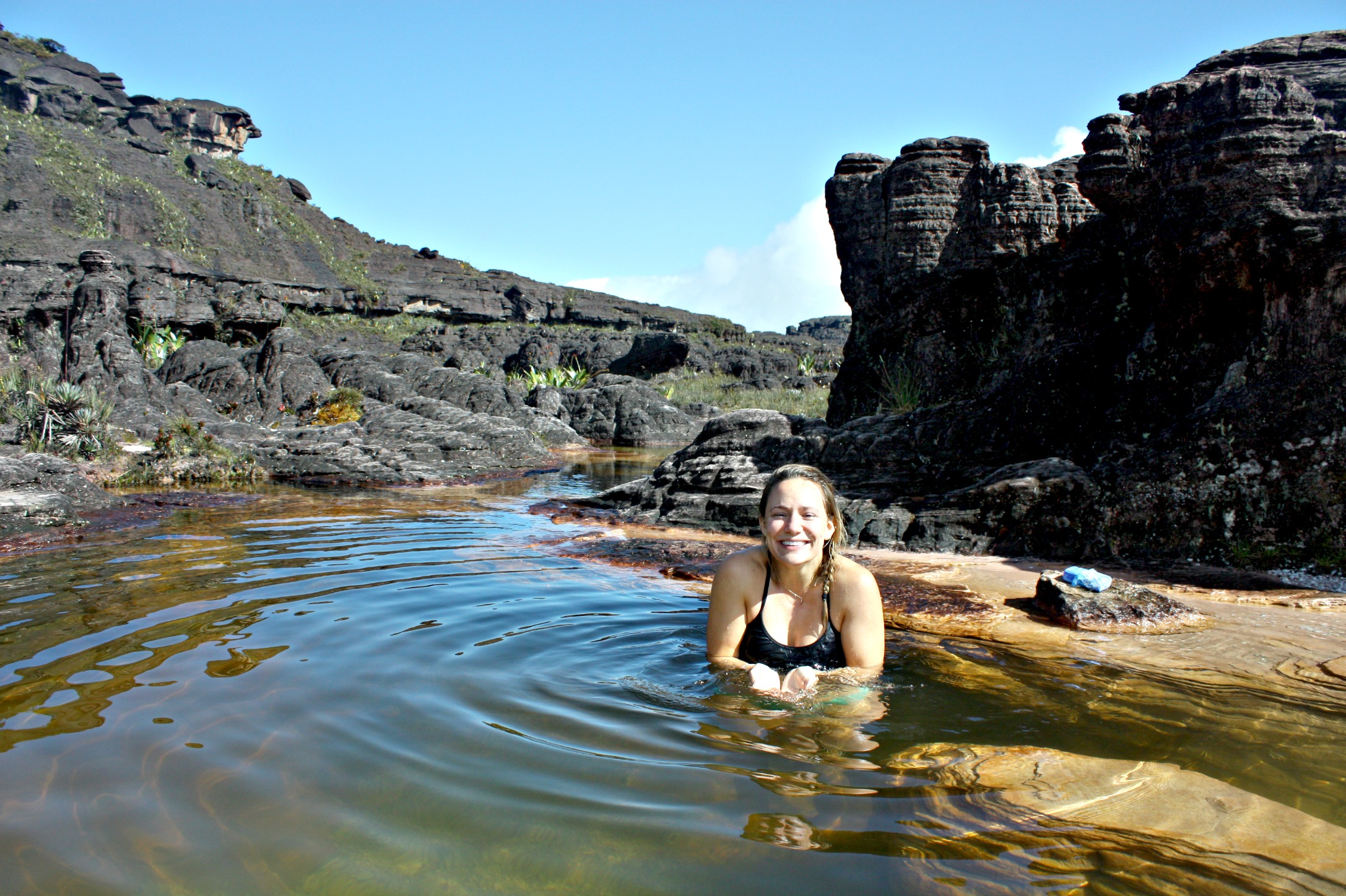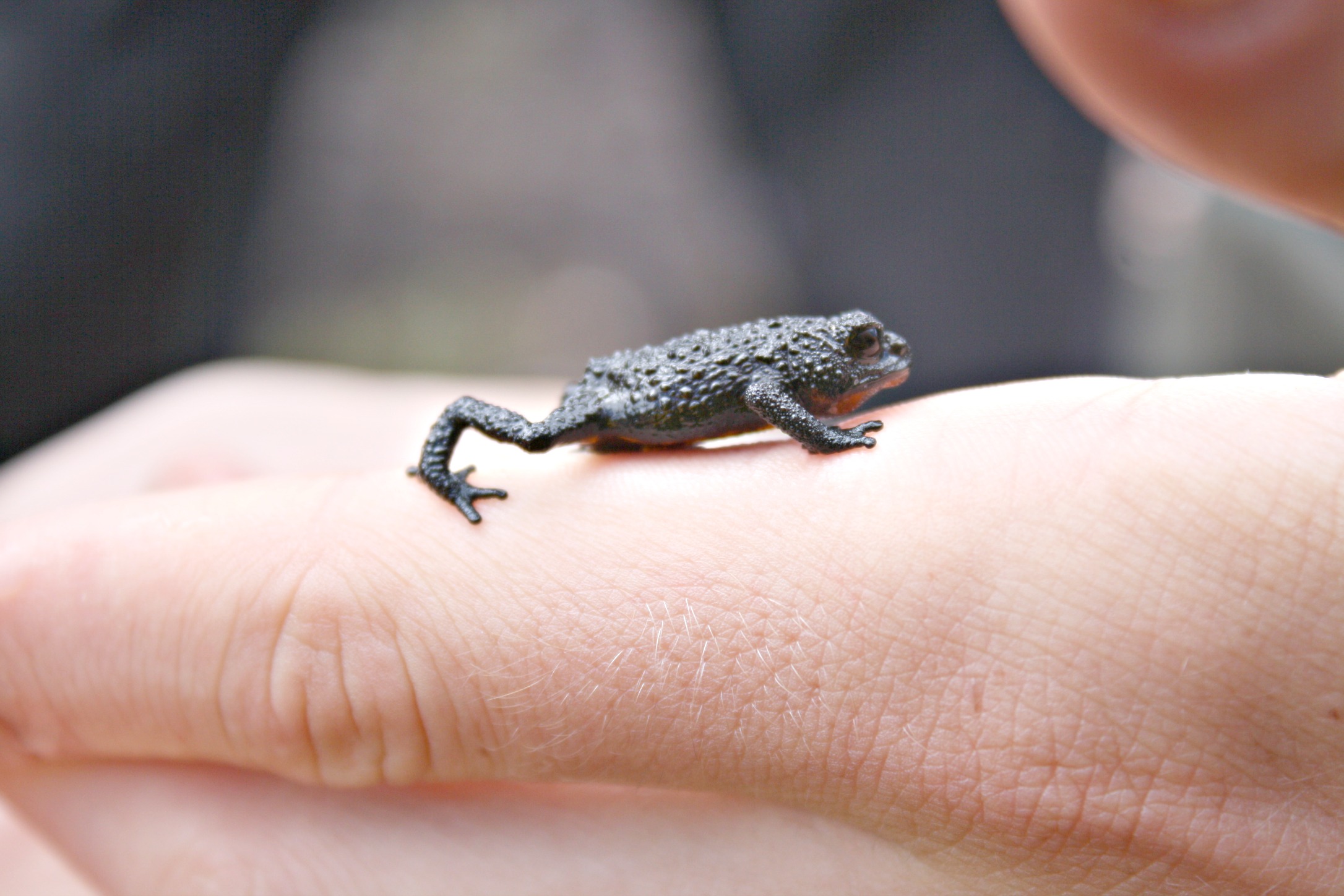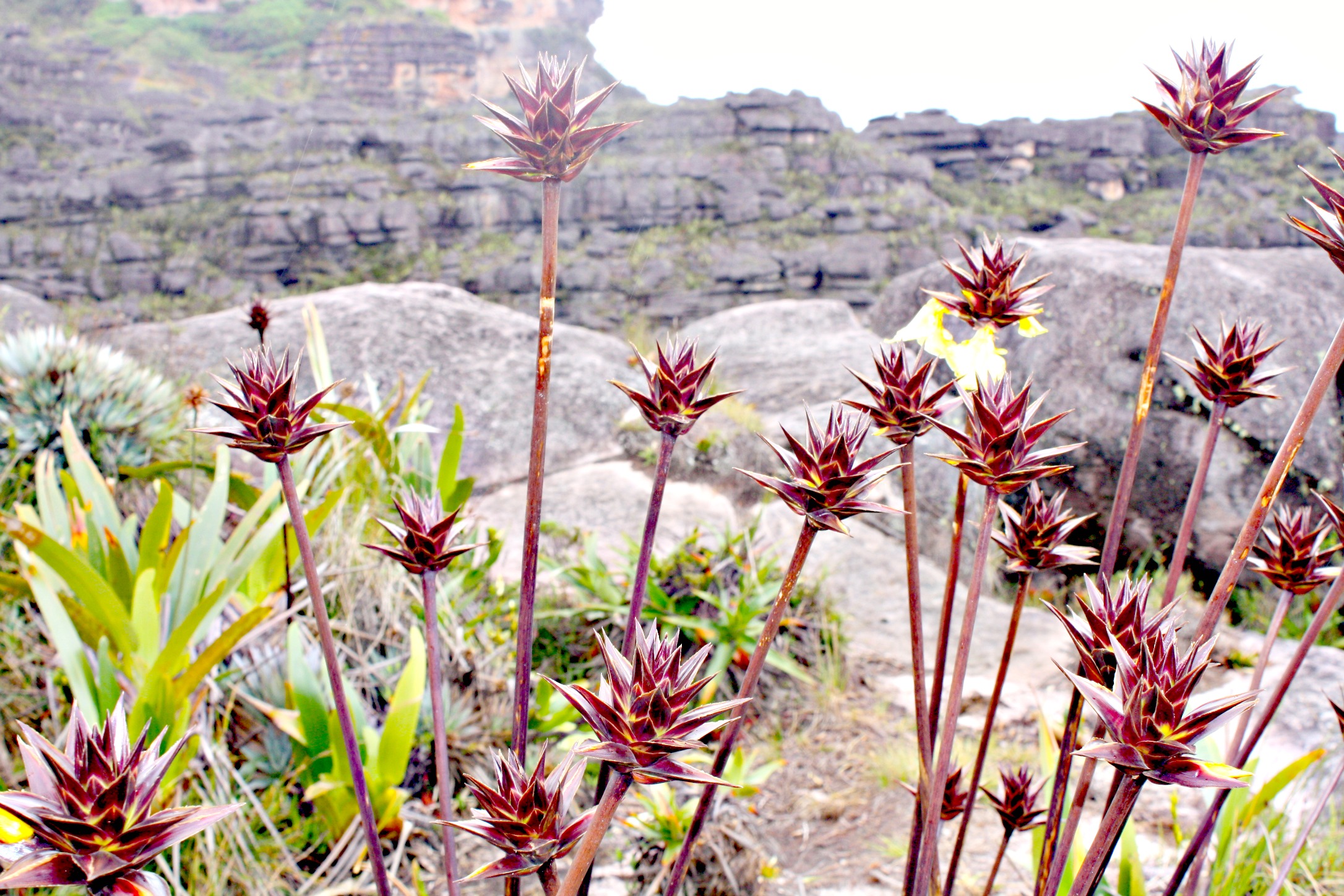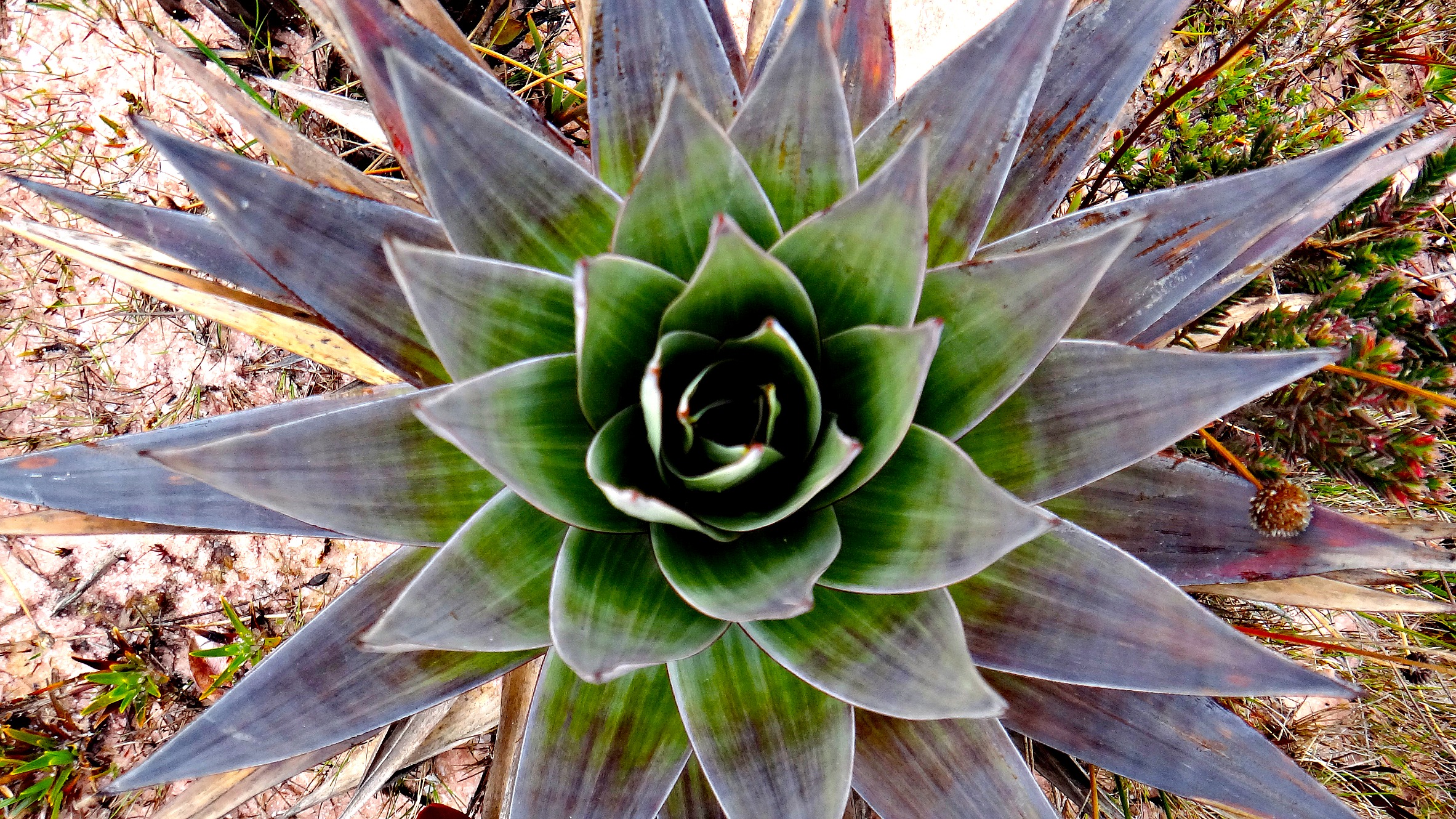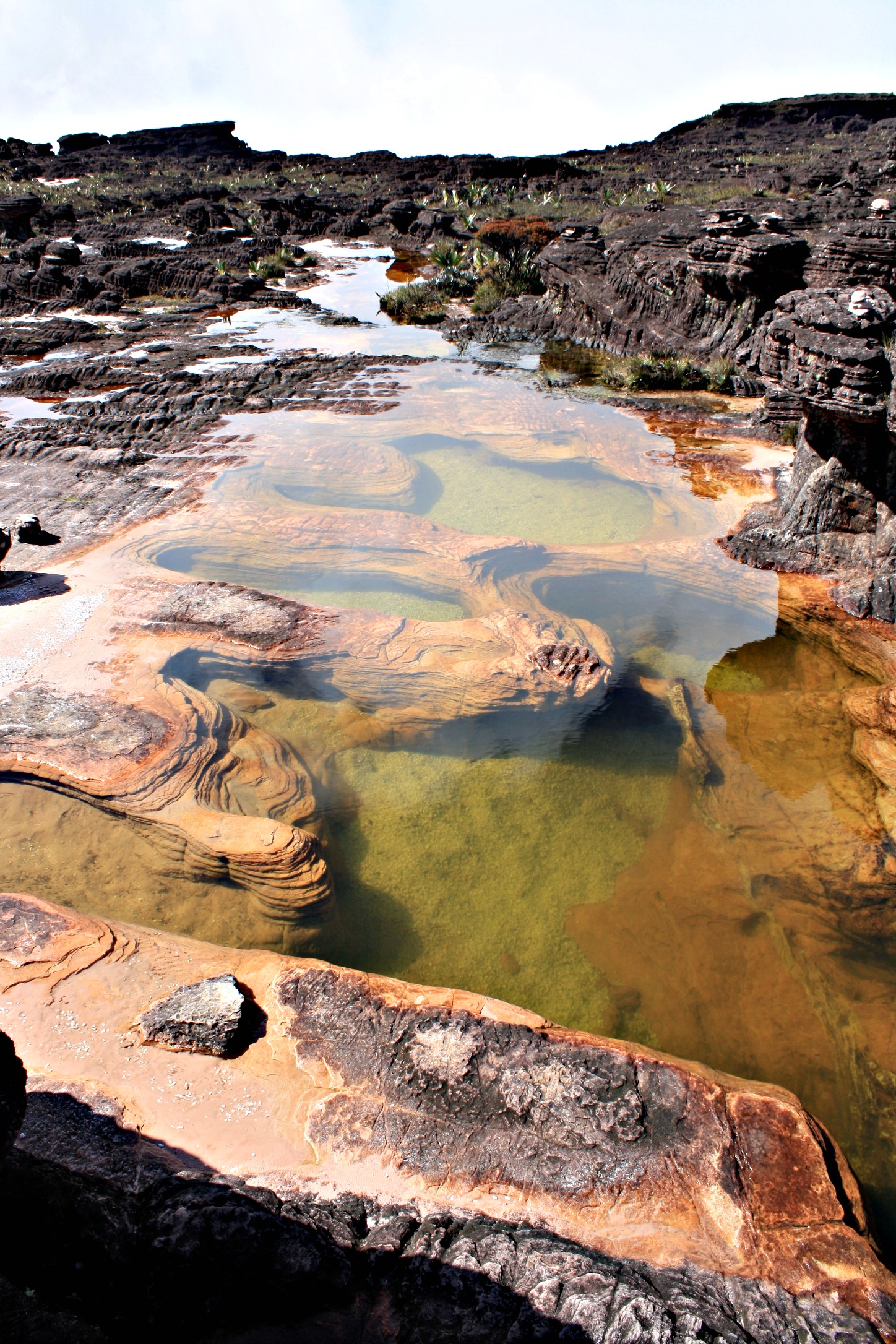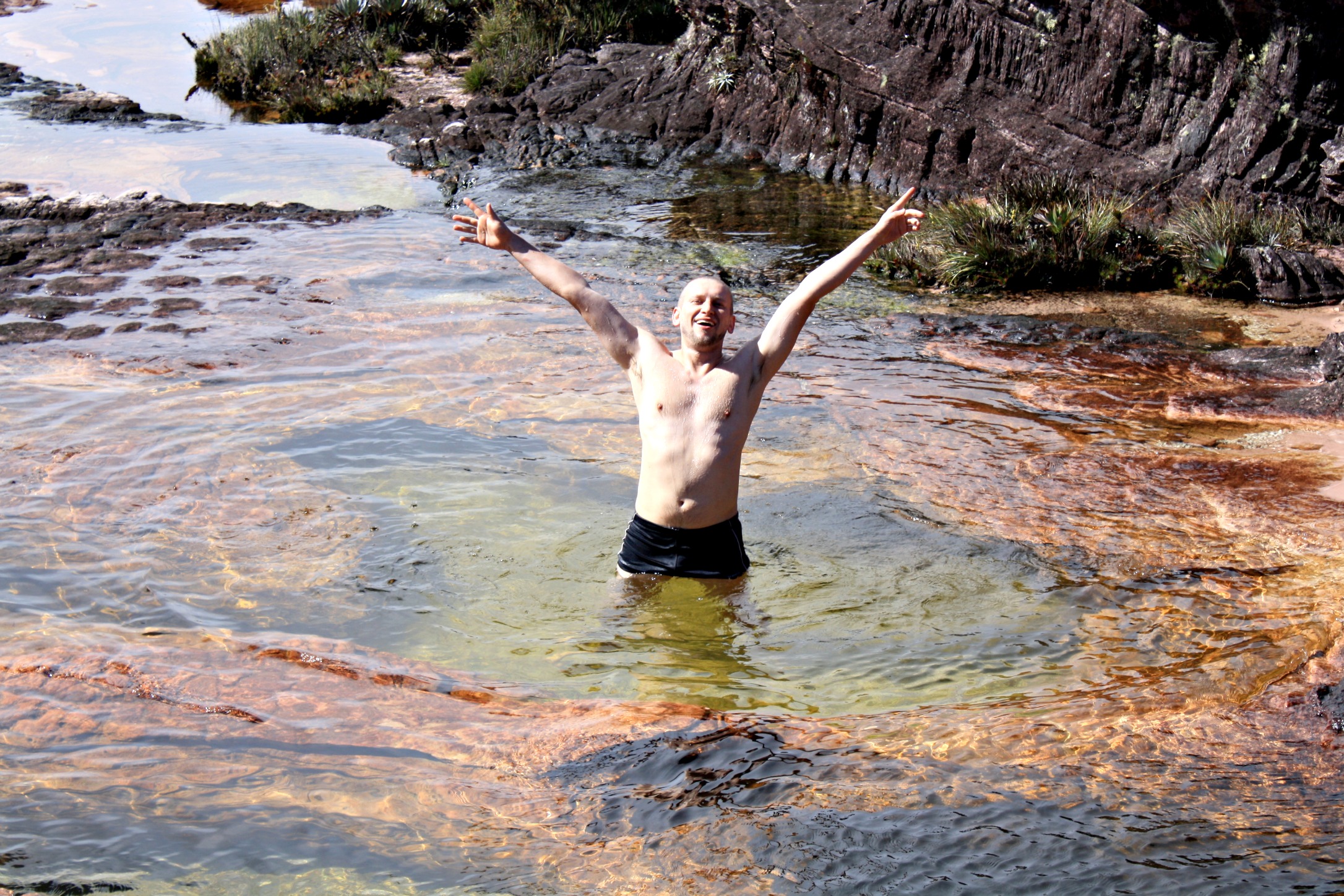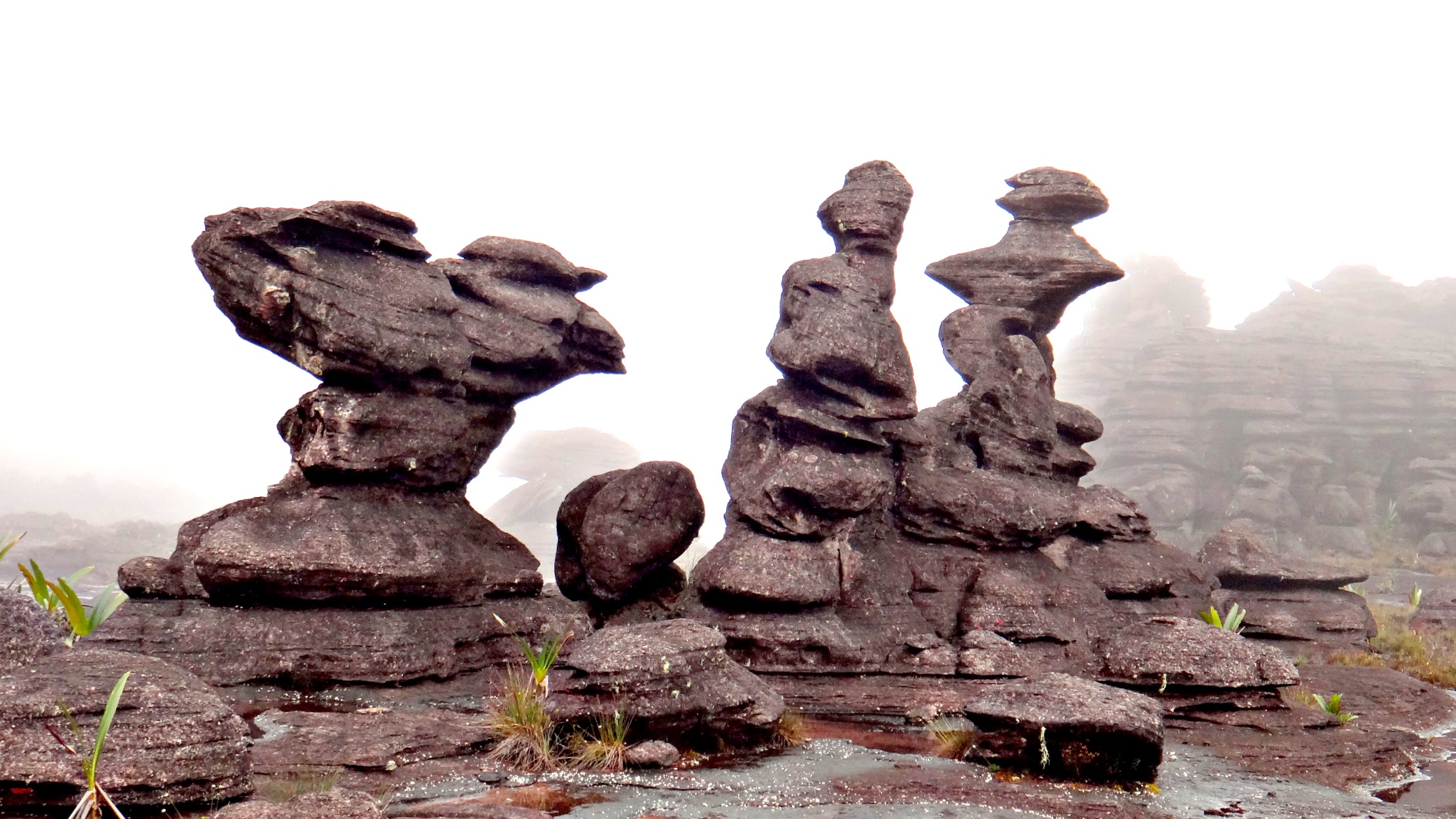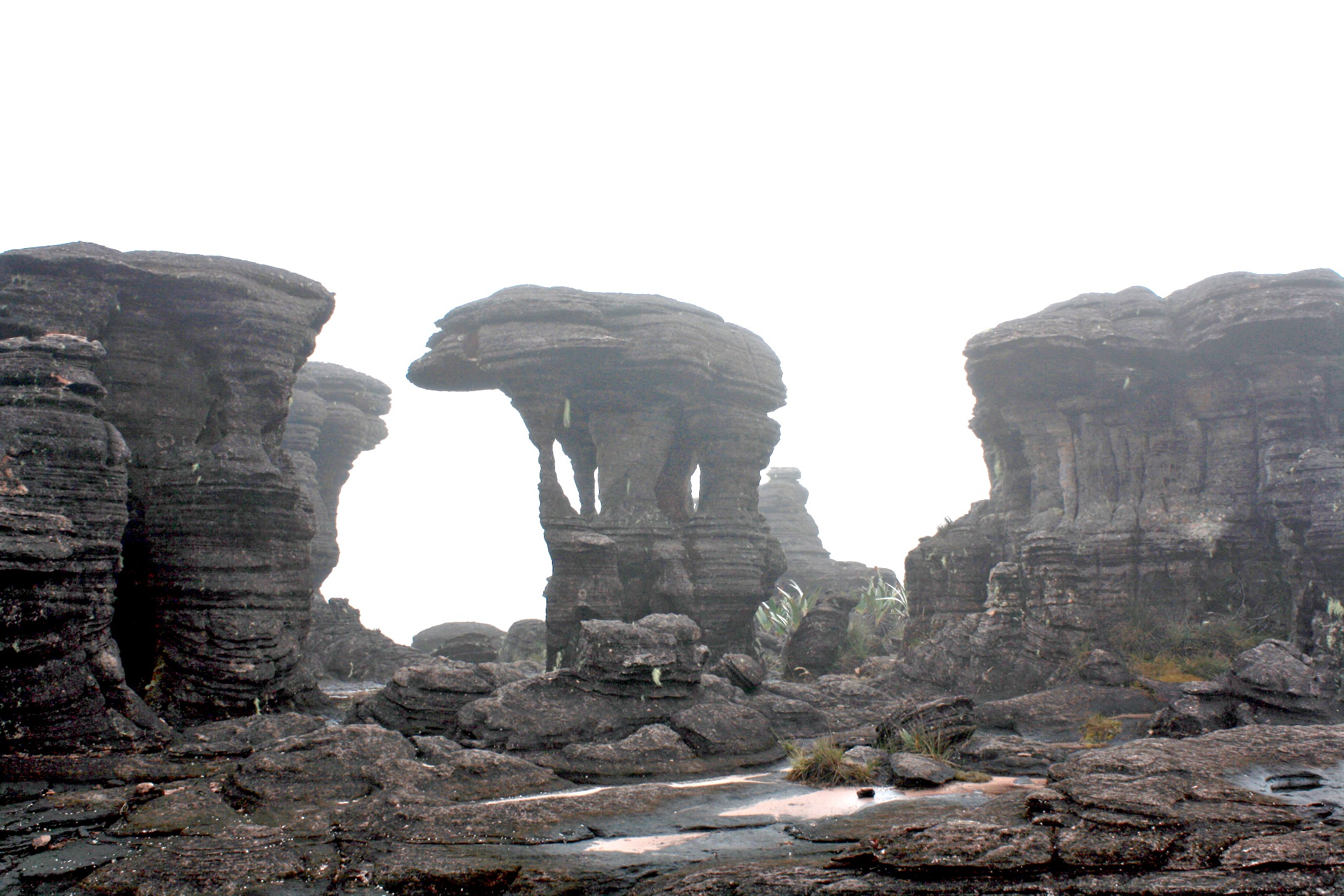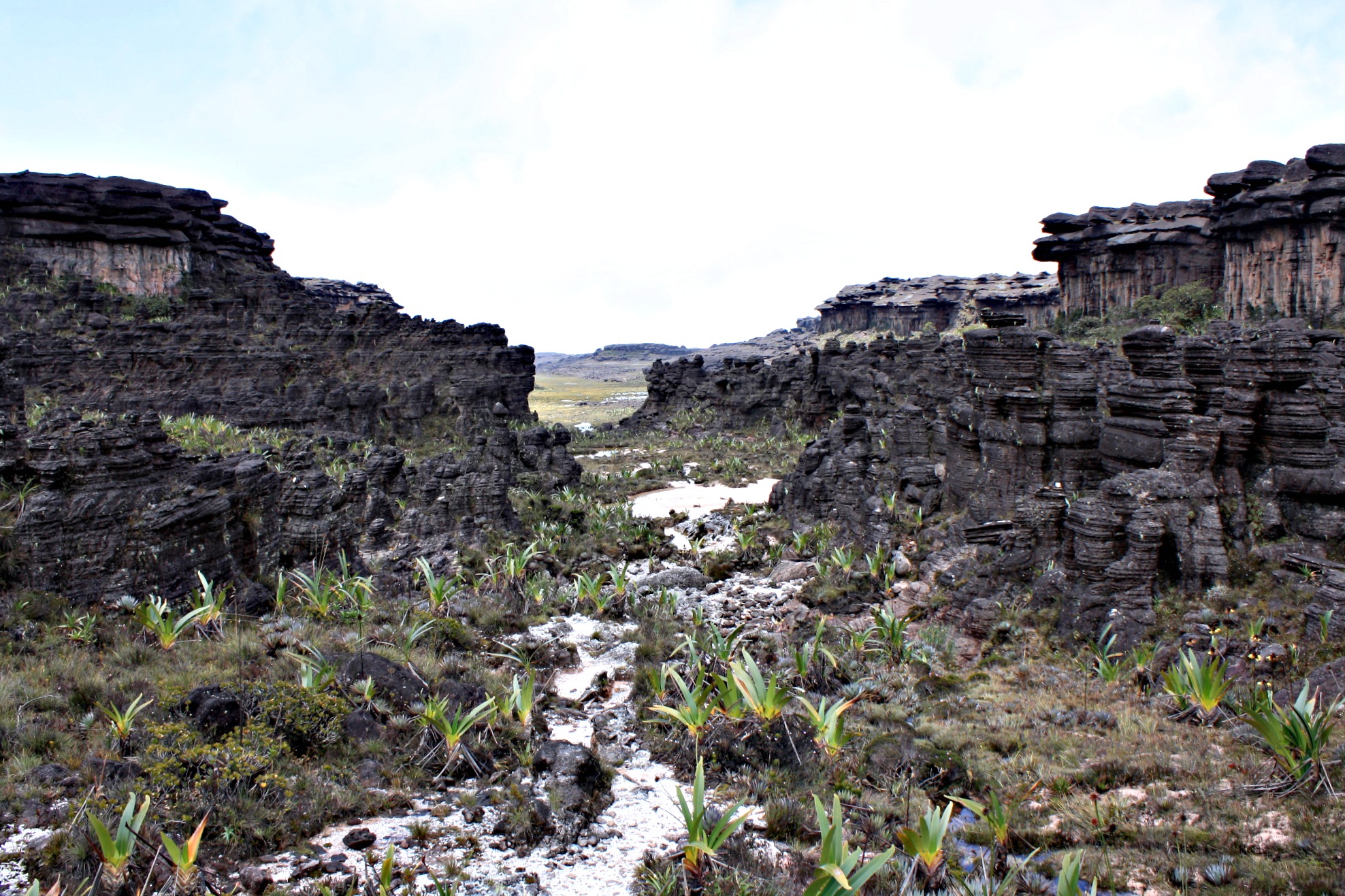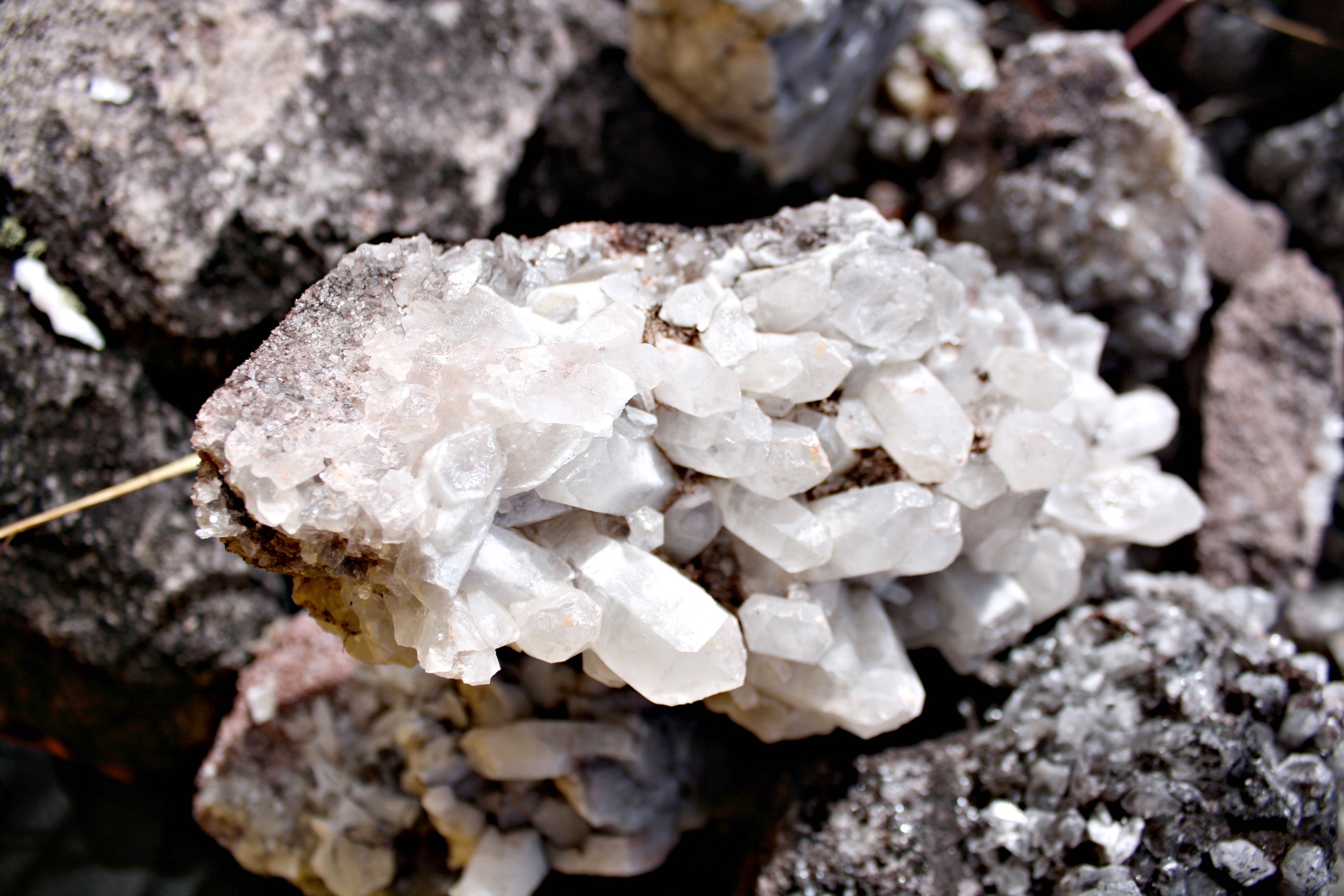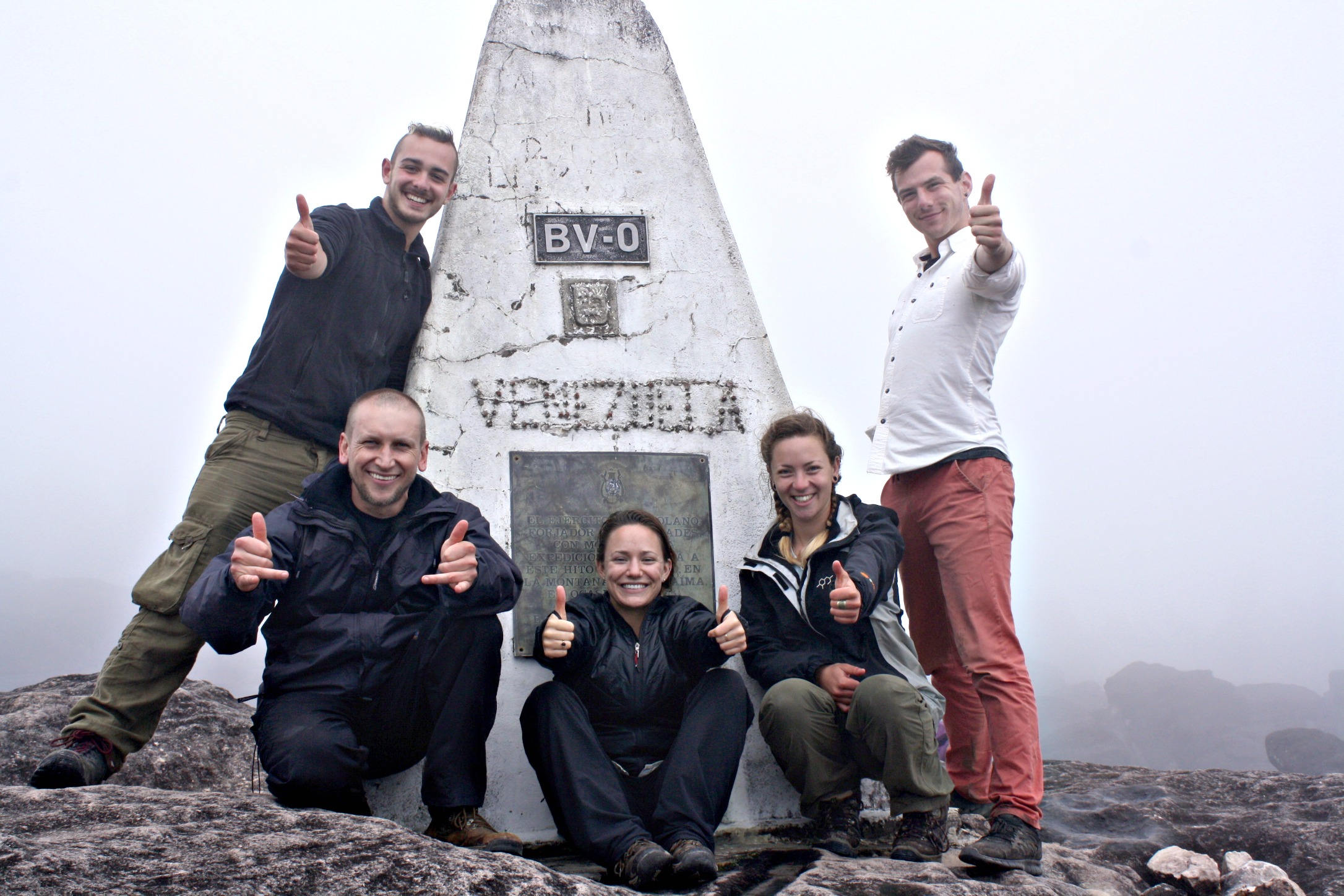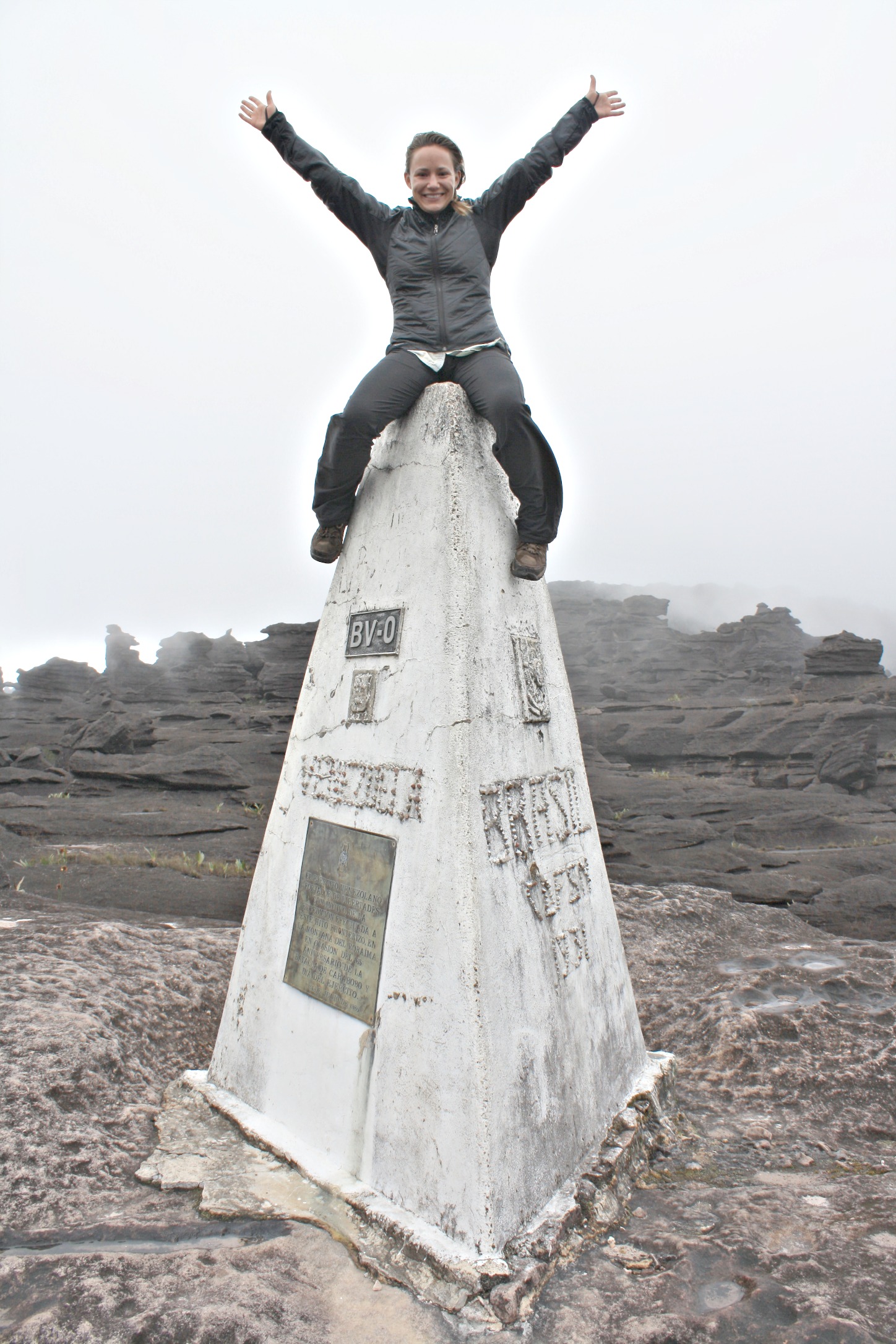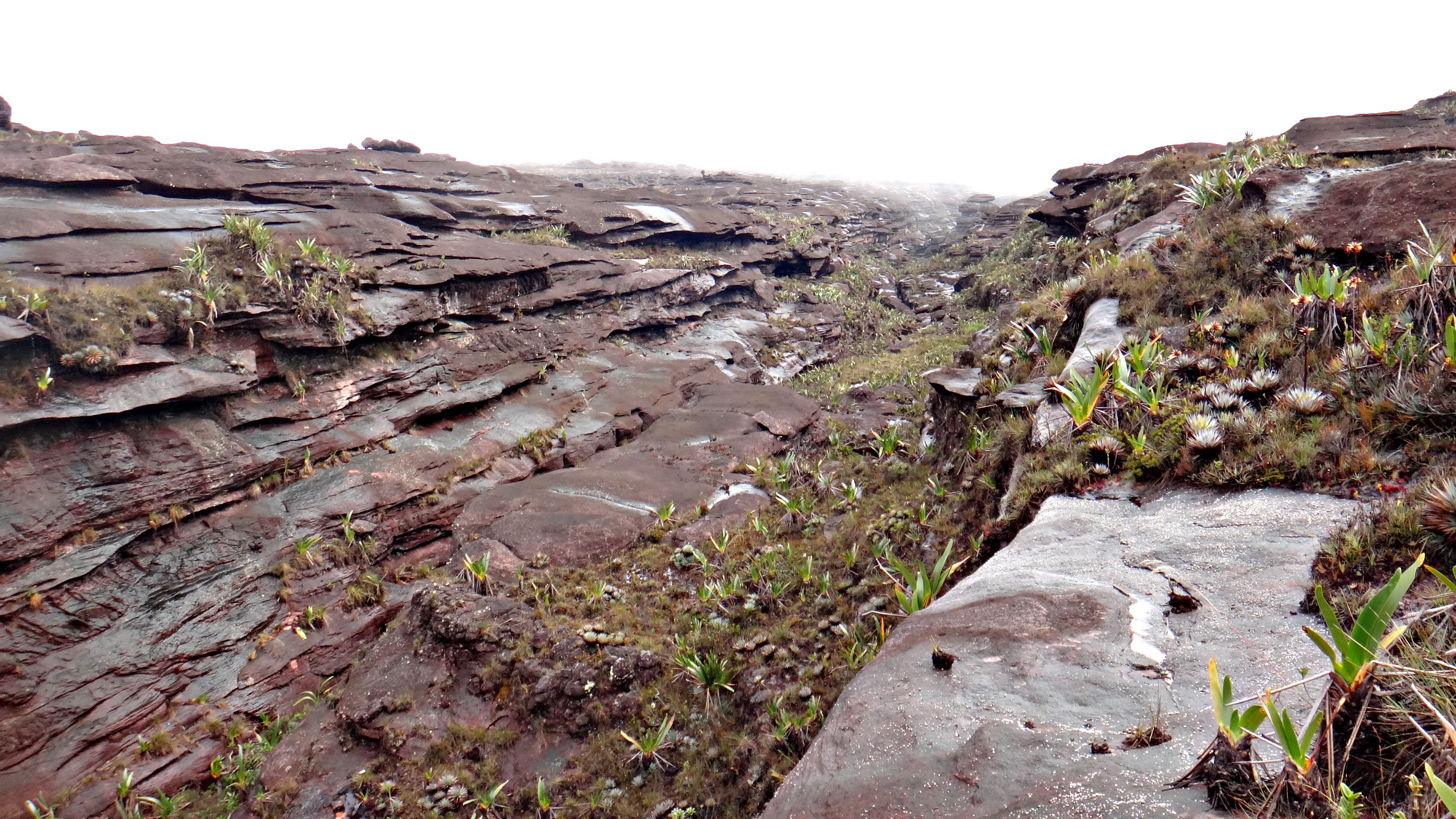When we left off in Part 1, our group of five along with our guides Jose and Roni, had just summited Mount Roraima after a grueling battle with the Trail of Tears on day 3 of our 6-day trek. We were sure the physical exertion was over for that day. We were wrong.
Day 3, Continued: Oh yes please! Let’s walk some more! I’m not half dead or anything.
We reached the summit of Mount Roraima at around lunch time, so we had the entire afternoon…to continue exploring. We headed to our nearby campsite, one of many “hotels” near the summit entrance that would provide us with natural protection from the elements. The top of Roraima is prone to harsh weather conditions, so we needed a place to shield us from rain and wind that could set in at a moment’s notice. Ours, named Hotel Indio, was a shallow cave that faced southwest and provided us with a fabulous view of Tepui Kukenan.

Our guides deftly threw together our camp in a matter of minutes and then asked if we’d like to spend the rest of the afternoon walking to some pools where we’d be able to swim and bathe–a roughly two-hour trip. My legs screamed no, but my body odor screamed yes. The rest of the group was enthusiastic about this idea, so off we went.
Mount Roraima and the other tepuis of South America are some of the world’s oldest geological formations, dating back some 2 billion years. Only a small number of plants and animals have been able to survive the summit’s harsh conditions–wind and rain easily sweep soil over the cliffs, so plants are forced to cling to life in cracks and crevices where a small amount remains–and because the summit is so difficult to reach, new species are rarely introduced. A species of amphibian endemic to the tepuis, el sapito negro (black toad) has hardly evolved over the years; the toad is roughly the size of a thumbnail and crawls awkwardly instead of hopping like his contemporary counterparts. Many of the plants have a rather prehistoric look about them as well. We encountered many of these fascinating creatures on our walk to the pools.
The crystalline pools, while a beautiful sight to behold, contained the coldest water I’ve ever dared enter. I’m not a fan of cold showers, so you can imagine that immersing myself completely in freezing water wasn’t the most enjoyable activity. Others in the group plunged enthusiastically as soon as we arrived. On the bright side, the sun was out which made for relatively quick drying.
Once back at the campsite and with the excitement of the day officially over, we admired our scenery as the sun sank and whispered encouragements to our throbbing legs. Bedtime was even earlier now that we were on the summit; the temperature plunged as soon as daylight hours ended and we had no choice but to take refuge in our tents.
Day 4: Finding Punto Triple
On day 4, I woke up to the greatest surprise of the whole trip…COFFEE! No more hot chocolate or herbal infusions parading around as caffeinated beverages. They finally made me REALLL COFFEEEE and I sucked it down greedily, then asked for more. I immediately felt a new rush of energy that I knew I’d need to make it through the day. The beautiful weather we were dealt once again was a nice treat, too.
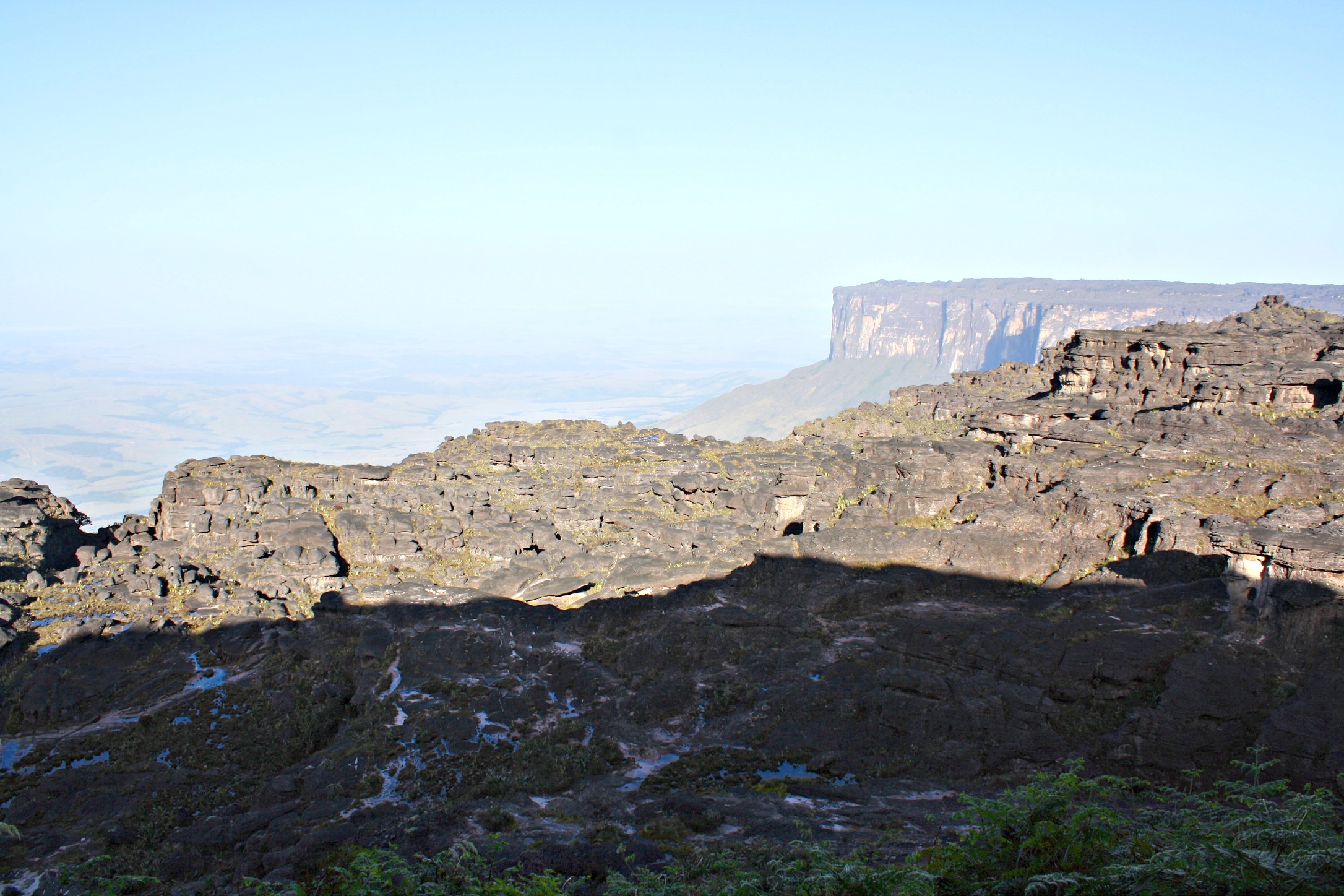
The goal of day 4 was to make the long trek–8 hours round-trip–to Punto Triple, or the exact spot on Roraima where the borders of Venezuela, Guyana and Brazil meet. Of course there would be plenty to see on the route there and back, but this was the main goal.
As we set out, a light breeze and heavy fog rolled in and obscured our views giving the mountain that mysterious, otherworldly look the makers of Up so masterfully recreated. We weaved our way between strange, towering rock formations, many of which bear striking resemblance to familiar shapes and have been giving identifying names. The only ones I can remember now are the Flying Turtle and the Valley of Penises, the latter we unfortunately didn’t get to see (womp womp).
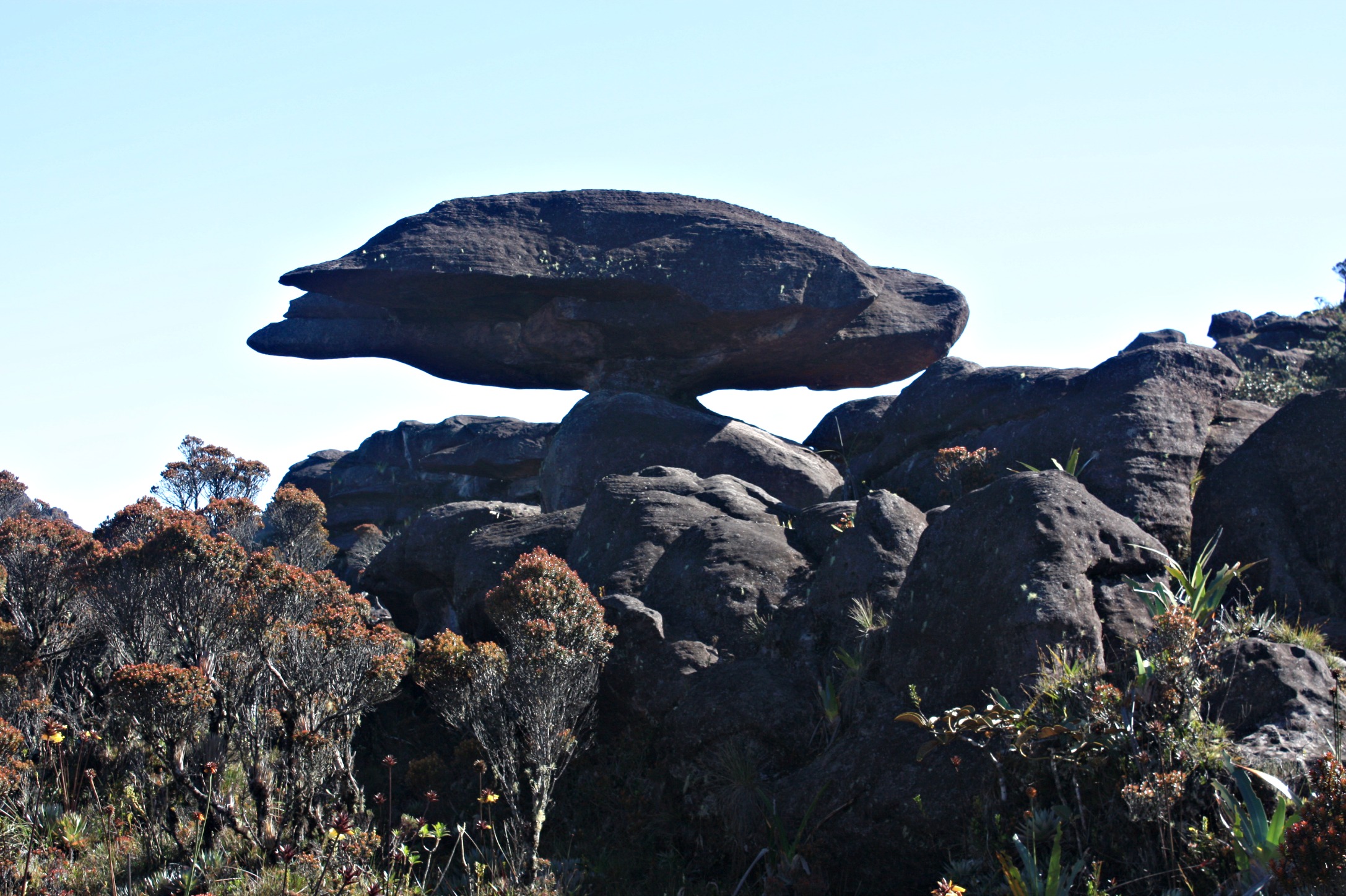
We walked for what felt like an eternity to my tired legs, up and over hills, down through expansive valleys, stopping occasionally for water and snacks. I remained cold for most of the day despite the vigorous activity. Another attraction on our way to Punto Triple was a valley overflowing with quartz crystals, aptly named Crystal Valley. We stopped for an early lunch in this valley to find shelter from the relentless wind.
Just after lunch, we walked another 20 minutes or so to finally reach our destination, Punto Triple. A tall white structure stands at the location, designated BV-0 (the Brazil/Venezuela boundary code) and each side is adorned with the name of the country it faces. The Guyana side was in poor repair, but Brazil and Venezuela were easily identifiable. The point was established by the border commissions of each country over the course of several expeditions to the mountain in the early 1900s; the point as it stands now was officially established in 1935.
Our final stop before making the long trek back to camp was a large sinkhole nearby, El Foso (The Pit). The brave ones took the 20-ft plunge into the chilly water at the bottom of the pit (everyone but me and the guides) as I wandered and snapped photos.

We hopped streams and performed various gymnastic stunts over the remaining obstacles on the way back to camp. Exploring Roraima without a guide would be certain suicide; there are no clear trails and with the constant fog it is easy to become disoriented and deep valleys sometimes appear out of nowhere. Many a misstep and stumble were had by all of us, and sustaining a serious injury on top of this isolated mountain would be disastrous.
We made it through four days uninjured, and our last night on top of Mount Roraima was beautiful and serene. Only wispy clouds drifted in and out of view, and our sunset remained mostly unobscured. We were excited to begin our descent the next day, and after a hearty and impressive-considering-the-circumstances dinner of steaming lentil soup, we each drifted off into our own deep slumber, exhausted from the day’s activities.
Day 5: The Descent
To be honest, day 5 was a bit of a blur. We would be descending all the way to our very first camp, leaving only 3 hours of walking for day 6. We were less enthusiastic about stopping for photos, but I did get one final shot from La Puerta de Roraima (Roraima’s door).
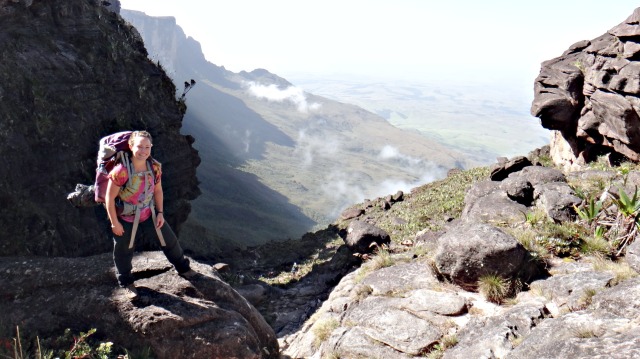
We quickly stopped for lunch at base camp and powered through the afternoon to reach camp number one next to the river Tok. Luckily, the rivers were considerably lower on our return making the crossings much easier.
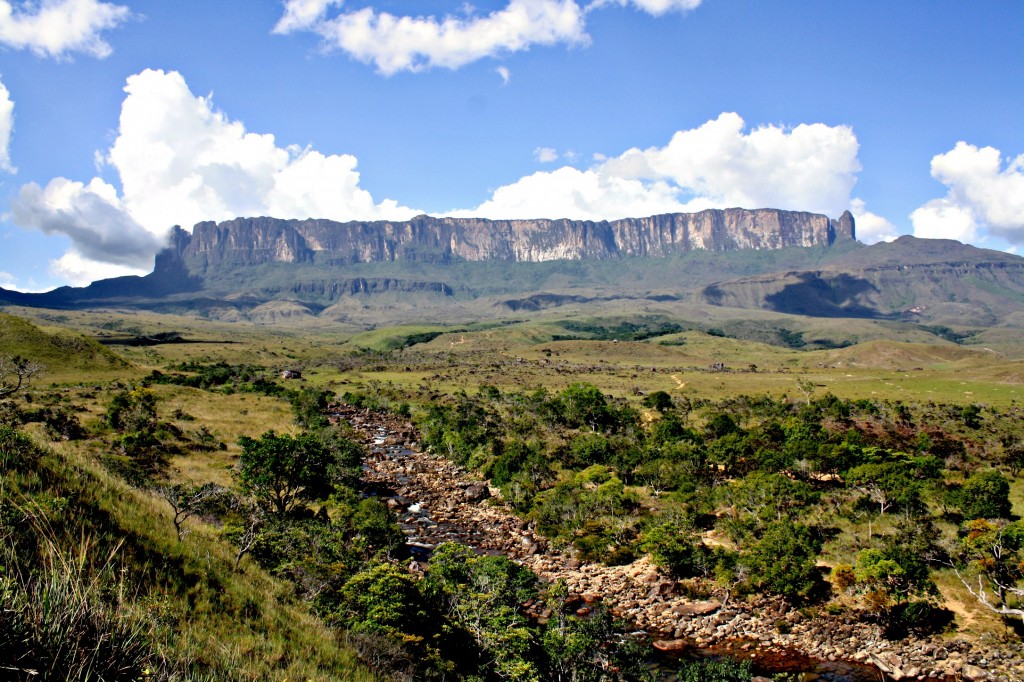

We made it to our final camp in the middle of the afternoon and spent a bit of time playing around in the river and washing what we could of our filthy clothes. John and I purchased some warm beers from the one of the little mud huts and toasted our successful journey.
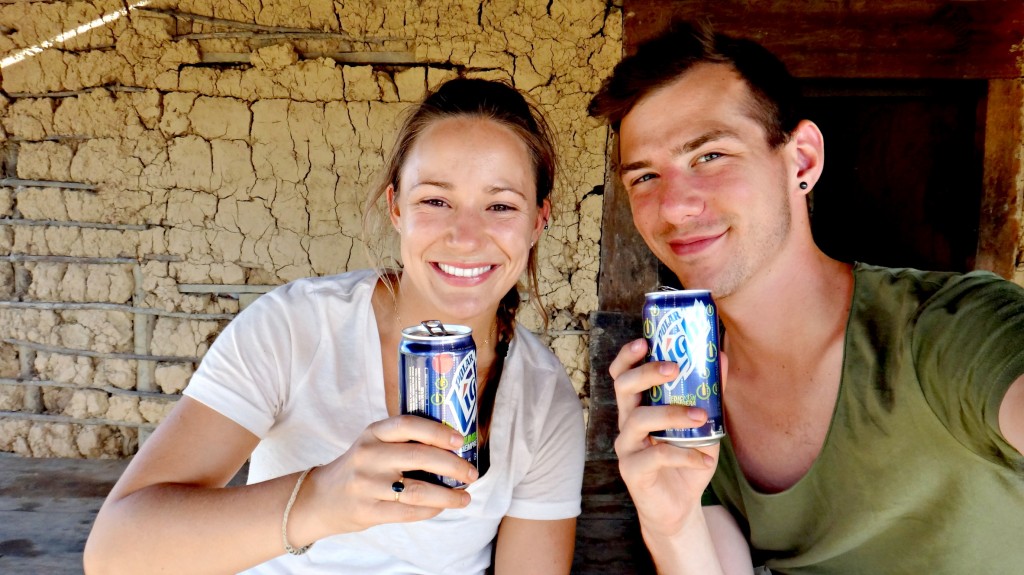
Later that night, our guides surprised us one final time by presenting us with a bottle of local whiskey (the stop at the liquor store finally made sense) and we spent the whole evening celebrating together and sharing stories of our travels.
Day 6: The Real Hardest Day
I know what you’re thinking: Day 6 was just a few hours walking over mostly flat ground, right? How could it have possibly been the hardest?
The challenge of day 6 was 100% mental. I knew we only had about 3 hours of hiking to reach our final destination, but the screaming pain in my legs was no longer so easy to ignore. I wanted it to be over before it had even begun. I lagged behind the group by several strides for much of the walk. The sun was beating, I was sweating profusely and refused to speak to anyone. At the halfway point, I popped my headphones in, put my head down and powered on as fast as my little legs would carry me.
When we could finally see our end-point of Paraitepui in the distance, we became hysterical with joy and practically skipped up and down the last few hills. We reached town and collapsed into a worthless sweaty pile of bodies on the cold cement floor of the park ranger’s office. We stretched and massaged every possible muscle as they checked our bags to make sure we hadn’t removed any precious stones from Roraima.
Just as we were given the all-clear, the driver from the tour agency appeared from nowhere with a case of COLD BEER and fresh watermelon, and a fresh round of happy sobs ensued.
Upon arrival back in Santa Elena, we profusely thanked our incredible guide and porter and presented them a generous tip, then exchanged many hugs and said our goodbyes. Though we were glad it had come to an end, we were in awe of our accomplishment and the incredible beauty of Mount Roraima; it was worth every ounce of pain and an experience none of us would ever forget.
Have I convinced you to climb Mount Roraima? What’s the best trek you’ve ever done?

